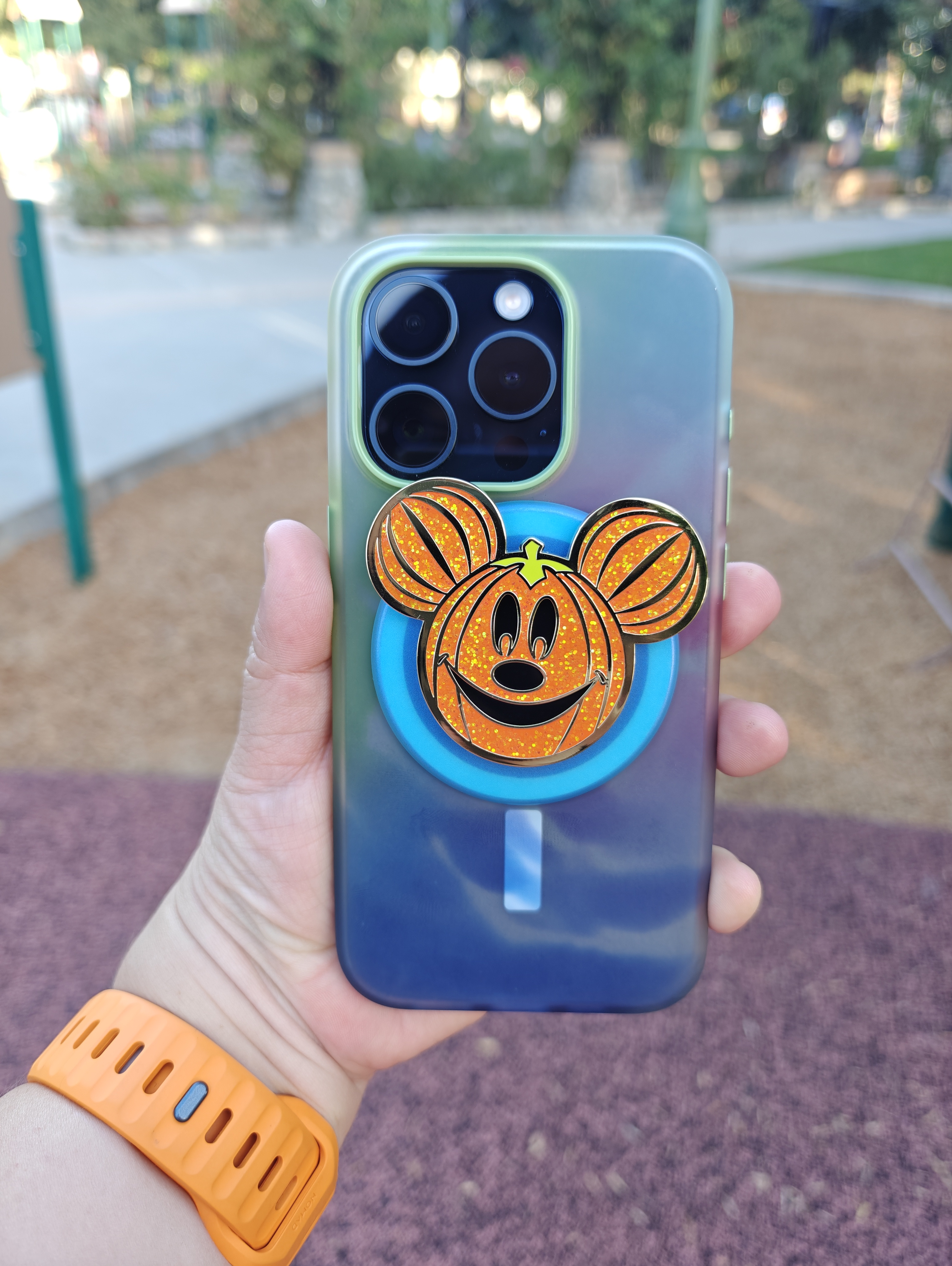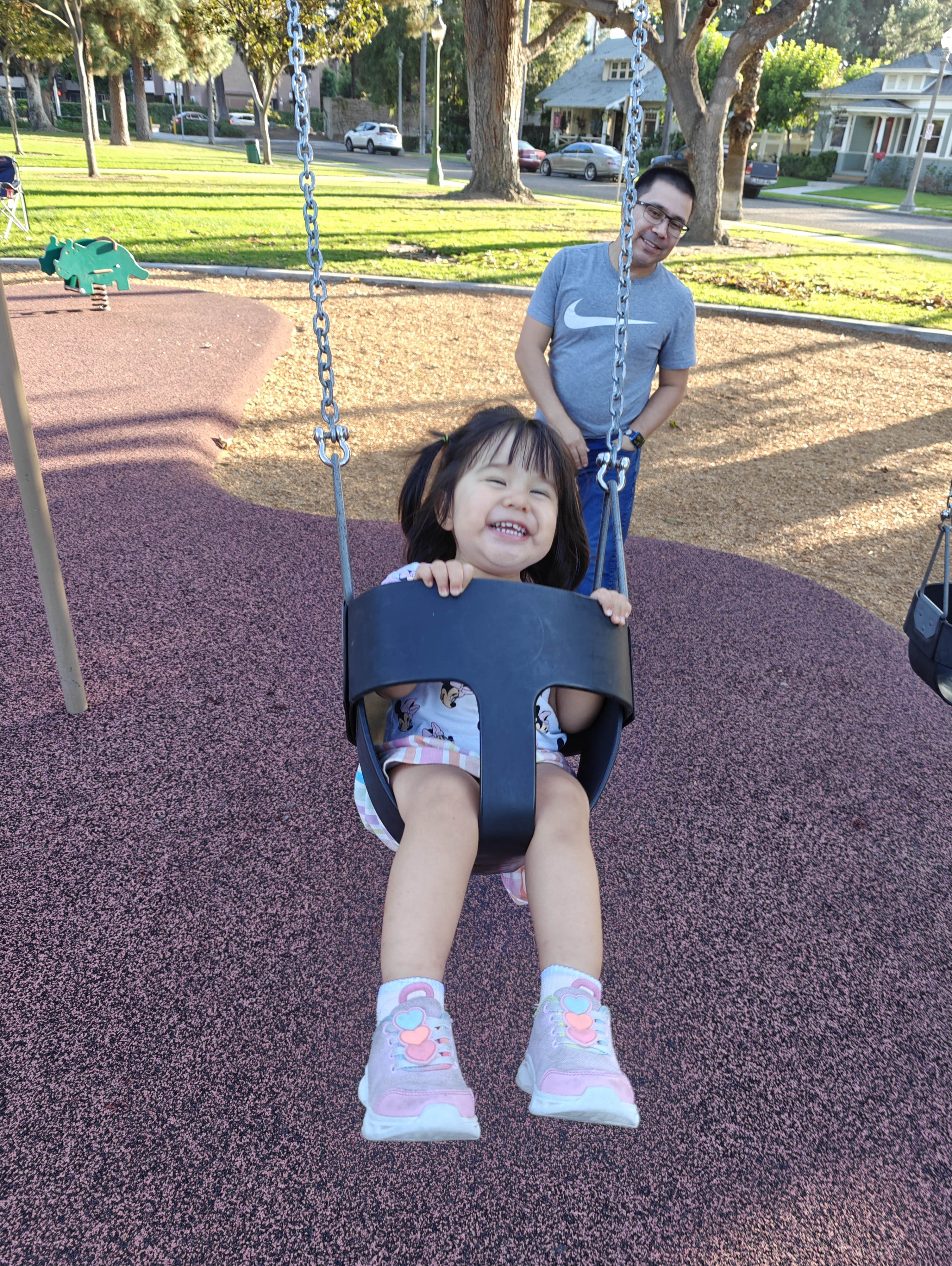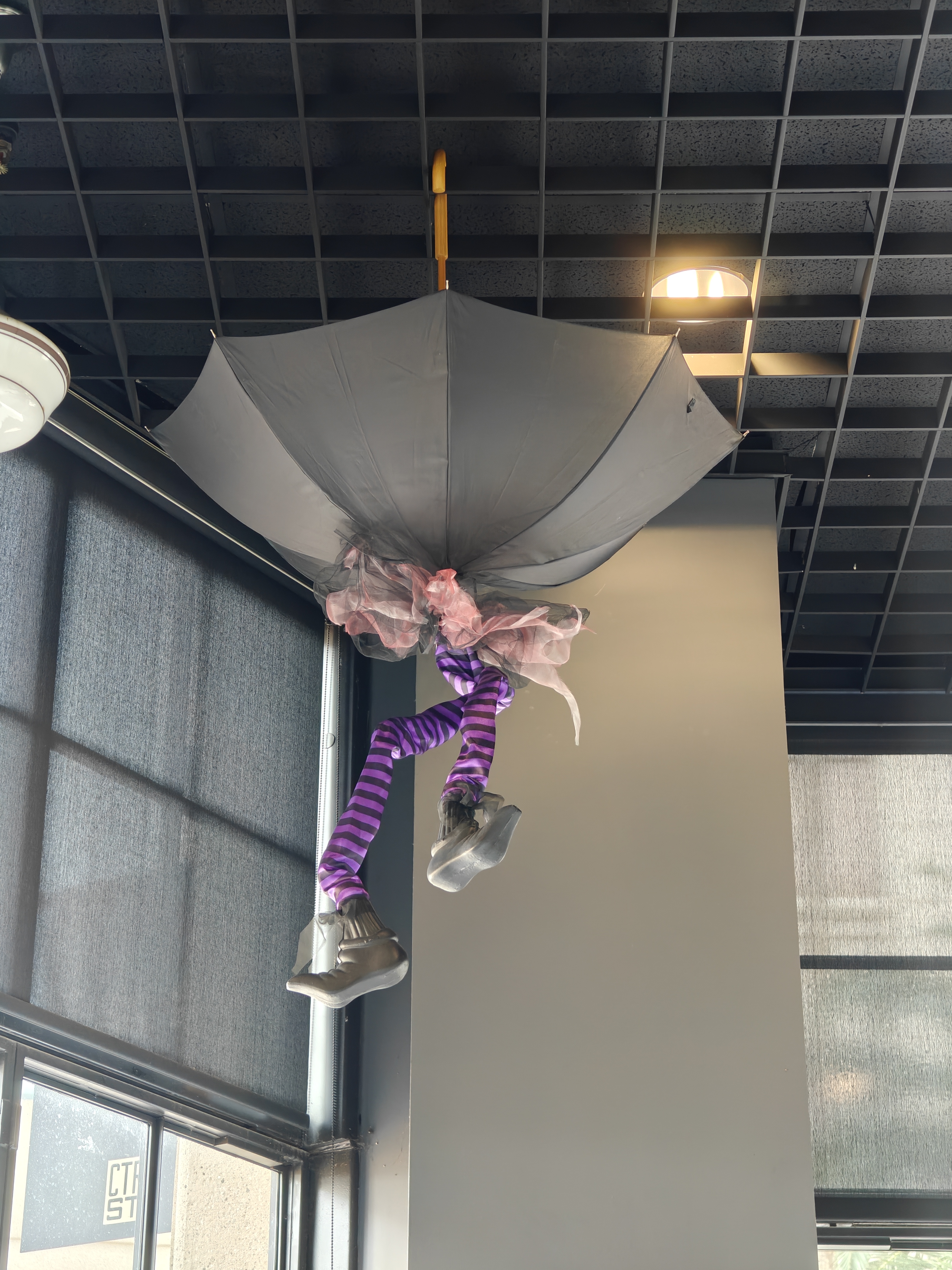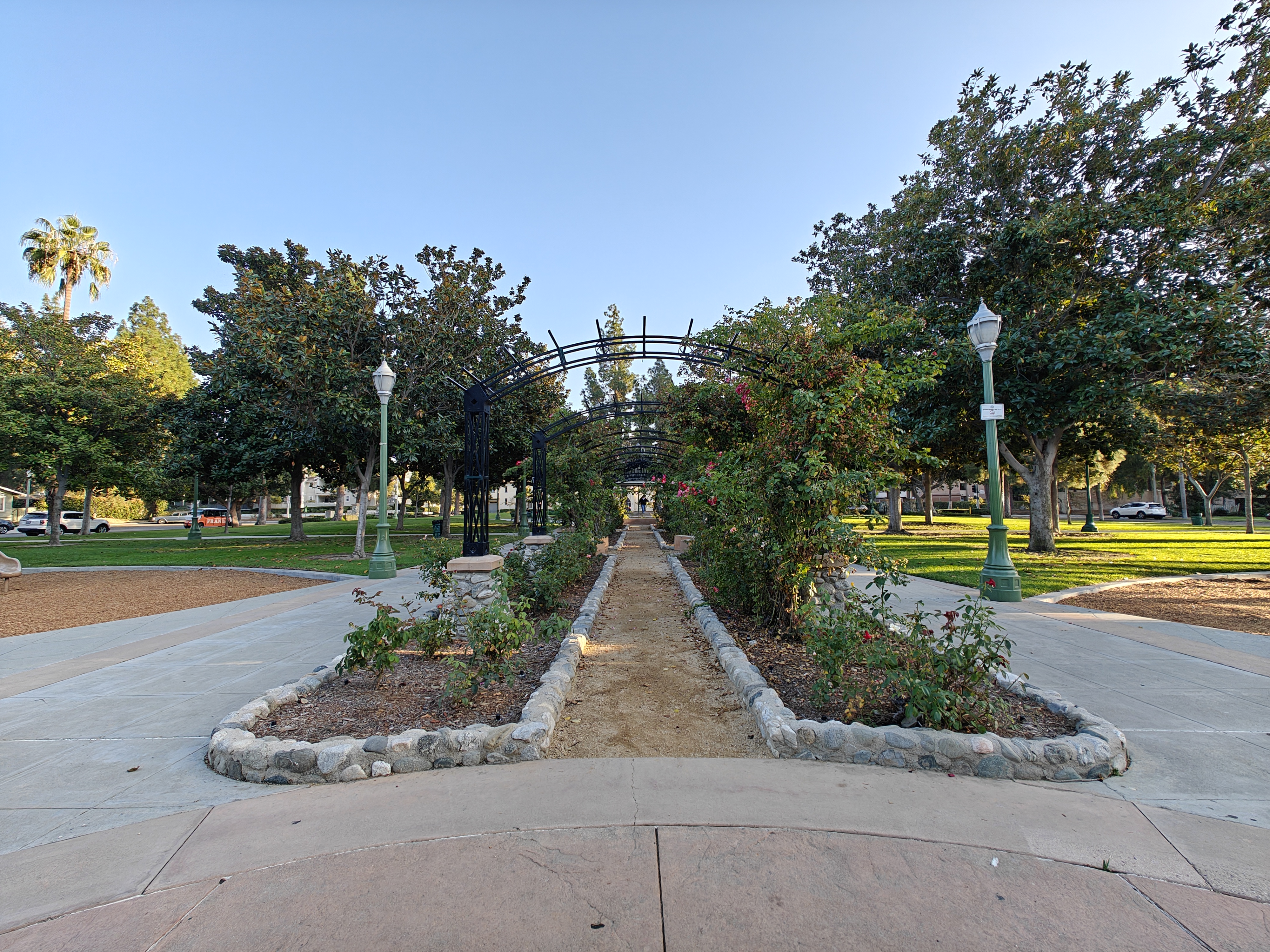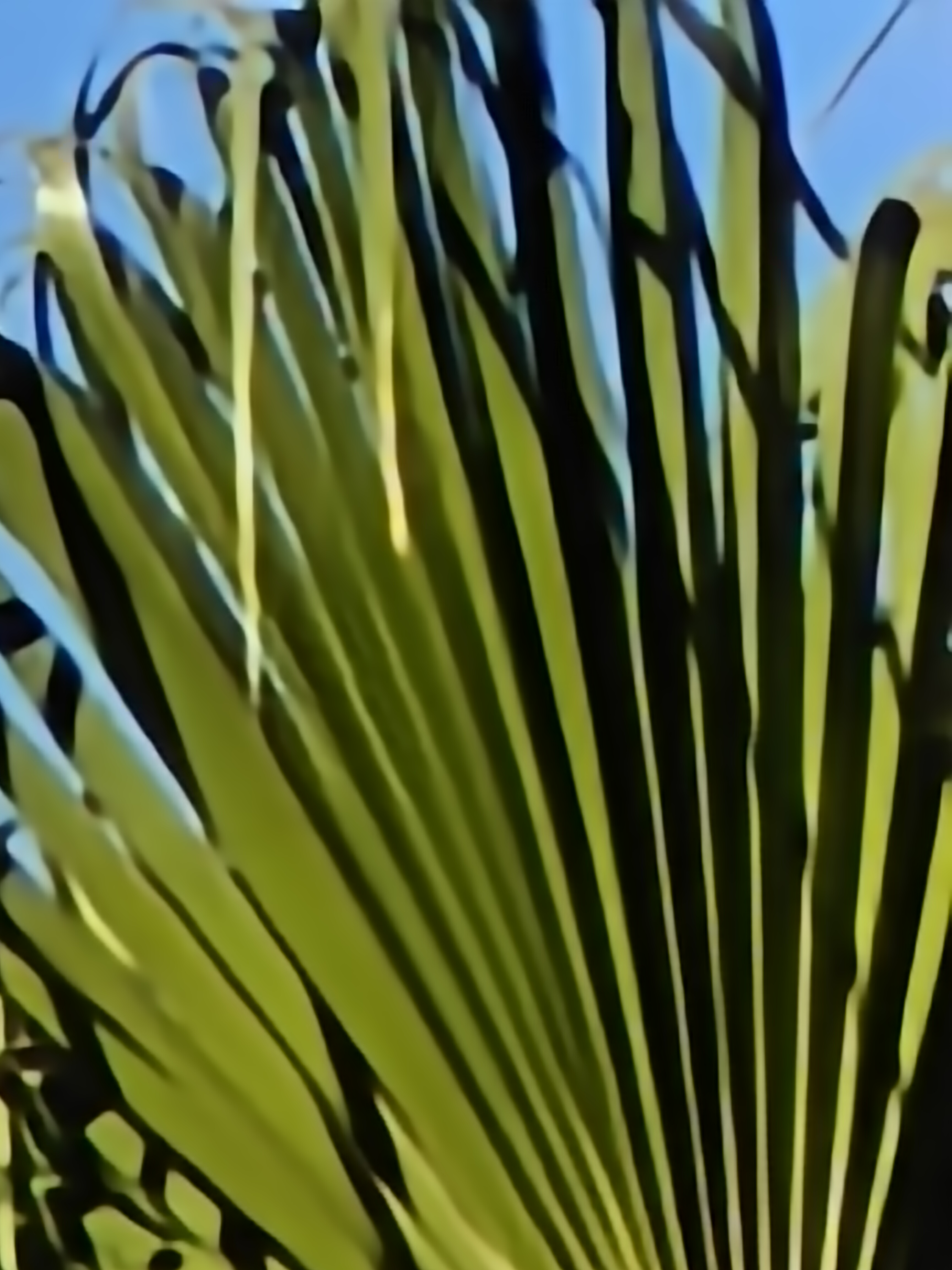
- Great compact and lightweight size
- Powerful cameras
- Beautiful screens
- Anti-glare inner display
- Opens flat easily
- 67W fast charging
- Intuitive multitasking
- Hinge isn't firm enough
- Large camera bump
- Macro and 120x Super Res are not great
Folding phones have been around for several years now, but they haven’t quite achieved mainstream popularity. The market was also largely dominated by one brand (Samsung), at least in the U.S., but that’s changed in recent months and years. In 2023, OnePlus entered the foldable scene with the OnePlus Open.
While OnePlus is a smaller brand when you compare it to the likes of Apple, Samsung, and even Google, it still makes some very capable devices. The OnePlus 12 is one of the best Android phones you can buy today, and the OnePlus Pad remains a strong tablet recommendation.
So, how does the OnePlus Open hold up as OnePlus’ first folding phone? For the most part, it’s pretty fantastic.
About our OnePlus Open review
Our OnePlus Open review was originally published on October 19, 2023, after the phone’s launch. Christine Romero-Chan gave the OnePlus Open another look in April 2024 and added a new “six months later” section below.
OnePlus Open: six months later

Despite coming out in 2023, the OnePlus Open is still a fantastic foldable and holds up well even in 2024. It’s definitely still one of the best foldable phones you can buy right now.
As I picked up the OnePlus Open to revisit half a year later, I was reminded immediately why this was one of the best phones, especially for a foldable, that came out late last year. Even though it has a foldable form factor, the OnePlus Open is incredibly lightweight and comfortable to hold and use, even with one hand. It’s much lighter than the competition, which is the Samsung Galaxy Z Fold 5 and the Google Pixel Fold, thanks to the titanium alloy and the Flexion Hinge design. It’s light enough, and the cover display is a good, standard phone size so that it is comfortable to use single-handedly. I even found it nice to scroll through apps with one hand when I had it open and used the inner display too.
Speaking of displays, the OnePlus Open really has some of the best screens I’ve used. As I mentioned, the cover display is 6.31 inches, which is about the size of your average slab smartphone. This means it doesn’t feel too different to use, especially one-handed — one of the things that annoys me with the Galaxy Z Fold series is that the cover screen is so tall and narrow, making the on-screen keyboard more cramped than normal and resulting in a lot of typing errors from me when using it. I don’t have this problem with the OnePlus Open, thankfully, because it uses the dimensions of a normal phone, and I appreciate that.

The inner display is my favorite, though. Why? I absolutely love the antireflective layer on the inner display because it means heavily reduced glare, and it makes the crease significantly less noticeable compared to the competition. When you use the OnePlus Open outdoors in sunlight, the antireflective coating truly makes all the difference, especially since the Open also reaches 2,800 nits of peak brightness on both displays. Yeah, it may not be the insane 4,500 nits that you’ll get on the newer OnePlus 12, but it’s still brighter than most of the other phones on the market right now. I’d argue that the only drawback of the antireflective coating is that you’ll likely see more fingerprints, but that’s easy enough to wipe away every now and then. Plus, the protective coatings mean the inner display is more durable.
I still have my qualms with the Flexion Hinge, though. The biggest advantage of it using fewer components than the competition is that it’s more lightweight and easier to open the device flat without needing to apply a lot of pressure, unlike the Pixel Fold. However, it’s a double-edged sword still because once you open the device and try to use it in clamshell mode at an angle of about 135 degrees or more, it will spring open fully flat without a lot of force. I had this issue when trying to watch videos while sitting on my bed, and it was annoying, to say the least. But this is a niche use case — if you don’t plan to use the OnePlus Open in clamshell mode like that very often, it’s fantastic.

And though it uses last year’s Snapdragon 8 Gen 2 chip, it’s still incredibly fast and smooth in day-to-day use. Apps open up fast, scrolling is smooth with the 120Hz refresh rate, switching between multiple apps is a breeze, and its multitasking capabilities let you blaze through everything without breaking a sweat. Capturing photos is fast, too, and mobile gaming is also handled well. I mean, with 16GB RAM, the OnePlus Open can really handle anything you throw at it.
It’s been months since the OnePlus Open launched, and it received a lot of fanfare. That still holds true months later — this is one of the best and most delightful foldables I’ve used. If you’re looking for a great foldable, then it’s hard to beat the OnePlus Open, even in 2024.
OnePlus Open: design

Like other OnePlus products, the OnePlus Open has a very elegant and industrial design, which is one of the ways the brand stands out from the crowd. There are two colors for the OnePlus Open: Emerald Dusk and Voyager Black. For this review, we were sent the Emerald Dusk version.
The back of the OnePlus Open has a matte-frosted glass that feels incredibly nice to the touch. It’s smooth and silky, though it is pretty easy to get fingerprints and smudges all over it. The Emerald Dusk color reminds me of the Midnight Green on Apple’s iPhone 11 Pro, but the color shifts and shimmers depending on the angle and lighting in which it’s viewed. Regardless, it’s a very nice shade of green that you don’t typically see. If you opt for Voyager Black, it has a rear cover of vegan leather instead.

The back is also where you’ll find the rather large circular camera bump, complete with Hasselblad branding. It’s a bit too big, in my opinion, and adds a bit of weight to this half, making it a little top-heavy when using it in clamshell mode. This leads to another problem, but I’ll get to that in the next section.
The OnePlus Open feels incredibly nice to the touch.
Most foldables are quite heavy, and the form factor affects the use of the cover display. But OnePlus seems to have a good balance with the Open, as the cover display is only 6.3 inches. That means using the cover display feels like a typical smartphone, which is something you won’t quite find with the Samsung Galaxy Z Fold 5’s tall and narrow cover display.
OnePlus also made the Open one of the lightest foldables around. This is because OnePlus uses a proprietary cobalt molybdenum alloy and titanium alloy rather than stainless steel like most other devices in the category. The OnePlus Open weighs only 239 grams, which is about the weight of an iPhone 14 Pro Max (240g). heavier competitors include the Samsung Galaxy Z Fold 5 weighs at 253g and the Google Pixel Fold at 283g. Since it’s lightweight, the OnePlus Open is a bit easier to use for extended periods of time, especially with one hand on the cover screen.

OnePlus brought back the Alert Slider with the OnePlus Open, and you can find it on the top half (or left half when open) of the phone. The Alert Slider has been redesigned from the ground up with the Open in order to make it fit on the 5.8mm compact folding body. If you’ve used a OnePlus device with the Alert Slider before, you may notice that the button size has been increased, and the middle frame position has been adjusted for better one-handed operation.
This is actually my first time experiencing the Alert Slider, and it feels great when you use it. I actually like how much easier the Alert Slider is to use when compared to the standard mute/silent toggle that’s on the iPhone 15 and prior models — mainly since you can easily maneuver it with one hand.
On the bottom half (or right half when open) of the OnePlus Open, you have the volume rocker and power button/fingerprint sensor. The fingerprint sensor has been fairly accurate and fast, with no problems.
OnePlus Open: Flexion Hinge

For the OnePlus Open, OnePlus designed the Flexion Hinge. It’s built around a single-spine architecture, which OnePlus says allows for better integration between components and makes it more sturdy compared to the three-part spine that other foldables use. The Flexion Hinge reduces the overall number of parts to 69 compared to the 100-plus in competing foldables, making the hinge and overall device more lightweight.
While all that sounds great on paper, I found the OnePlus Open’s hinge to feel a bit looser than other foldables, such as the Google Pixel Fold. In fact, once you get past what would be an obtuse angle (maybe 135 degrees) when opening the device, it kind of just springs into the fully open 180-degree position with little to no force needed. There isn’t a lot of stiffness in the hinge to allow it to stay open at any angle you want, and that’s a problem.

I’m not sure if this is because the Flexion Hinge design has fewer parts involved in the build, or maybe it’s because of the huge camera bump making that half a bit top-heavy. But if you’re trying to use the OnePlus Open in clamshell mode past 90 degrees for viewing (say, if you’re sitting down with a table or surface that is lower than eye level, etc.), then you might have to deal with constantly adjusting the viewing angle because it’ll just spring open flat without much force.
But on the other hand, the Flexion Hinge allows the OnePlus Open to open up completely flat without much effort. This is the opposite of the Pixel Fold, where you have to apply some force to make it open fully flat, which is always a bit nerve-racking.

Speaking of being fully open, thanks to the antireflective inner display, the crease is barely noticeable when you’re looking at it head-on. You can still feel it when you run your fingers across the middle of the inner display, but if a visible crease would be the bane of your existence, then I’m happy to report that it’s very minimal on the OnePlus Open. You can see it when you’re viewing it from the side, but that’s not how you would typically use it anyway.
If only the hinge could be firm enough to keep it open at an obtuse viewing angle, it’d be a virtually perfect hinge design.
OnePlus Open: screens

Now, let’s get to the displays. After all, aside from the hinge, the displays can make or break a foldable.
The cover display of the OnePlus Open is a 6.31-inch Super Fluid AMOLED with LTPO 3.0. You get a 2484 x 1116 pixel resolution at 431 pixels per inch (ppi) and an aspect ratio of 20:09. The dynamic refresh rate ranges from 10Hz to 120Hz, and it reaches 1,400 nits HDR brightness or 2,800 nits peak outdoor brightness — 400 nits brighter than the Google Pixel 8 Pro.
The inner display is a more square 7.82-inch Flexi-fluid AMOLED with LTPO 3.0 panel display that has a 2440 x 2268 resolution at 426 ppi. The dynamic refresh rate ranges from 1Hz to 120Hz, and it also has the same 1,400/2,800 nits brightness levels as the cover display.
The OnePlus Open cover display also uses an exclusive Ceramic Guard coating, making it 20% more impact-resistant than the Corning Glass Victus we see on many smartphones today. For the main inner display, there is a layer of Ultra-Thin Glass (UTG) and a TPU layer that protects the Flexi-fluid display from physical impact. Lastly, an antireflective screen protector is on the top layer, which not only protects the screen from wear and tear, but also prevents glare. I also believe the antireflective layer helps minimize the crease visibility.

With foldables, I tend to mostly use them folded, so the cover display acts as my main screen unless I need more space for multitasking or other tasks that do better with a larger screen (photo editing, for example). I found the cover display on the OnePlus Open to be beautiful — it gets incredibly bright, the colors are rich and vivid, and the text is sharp and crisp. The dynamic 120Hz refresh rate makes scrolling smooth and quite fast.
I also truly appreciate the size of the cover display. My issue with the Galaxy Z Fold series has always been the awkward tall and narrow cover screen, which makes it hard for me to use because I have trouble with the cramped keyboard compared to a standard phone size. The OnePlus Open is a good middle ground between the Galaxy Z Fold 5 and the Pixel Fold, which is wider and shorter. It feels like the Open’s cover display is more akin to a modern glass slab phone, which makes it easier for me to use.

The inner display is also gorgeous. Even with the antireflective layer, the colors appear bright and saturated, text is sharp, and scrolling is smooth with the 120Hz refresh rate. I also really enjoy having the antireflective display, as it is a big help with using it unfolded outdoors in bright sunlight.
This was an issue with the Google Pixel Fold, so it’s great to see the OnePlus Open reduce that glare on the inner display. Just be warned — it tends to be a fingerprint magnet, so you may need to wipe it constantly.
OnePlus Open: performance and software

Inside the OnePlus Open, you have Qualcomm’s Snapdragon 8 Gen 2 chipset, along with an Adreno 740 GPU, 16GB RAM, and 512GB storage. It also ships with OxygenOS 13.2, which is OnePlus’ custom OS based on Android 13.
One of the key features of OxygenOS 13.2 is Open Canvas. This is a new way to multitask with the OnePlus Open, and it was designed from scratch with the objective of increasing everyday productivity with multi-window efficiency on a larger screen.
Thanks to Open Canvas, when you do multi-window operations or use split-screen mode, it isn’t restricted to just the physical size of the display you’re on. You can choose to stretch and resize active windows as needed, with the secondary window sliding in and out of the canvas on demand.

The OnePlus Open also supports up to three app windows being displayed on the screen at once (in either split screen or floating), in both vertical or horizontal orientation. These can also be freely moved around and resized to your preferences. And if you have apps paired together, you can save up to nine of them, saving you from the hassle of having to do it each time.

OxygenOS 13.2’s Open Canvas also adds a desktop-like taskbar at the bottom of the screen. This is a persistent taskbar, so it won’t disappear after a few moments, even with gesture-based system navigation. In the taskbar, you can easily get to recent and preset applications.
I found the Open Canvas multitasking interface pretty intuitive and straightforward to use. There are visual indicators to help you see where you can grab and resize windows, and the persistent taskbar provides quick access to your most used apps, as well as all apps and recents.
With the Snapdragon 8 Gen 2 and 16GB RAM, the OnePlus Open has a ton of power. In my testing period, I did not experience any issues with the performance — I had a bunch of apps open at the same time and all of them were operating fine, with no stuttering when switching apps or using split screen and floating windows.

I have mostly used the OnePlus Open for my typical tasks, which include checking social media, work messages, and personal and work emails, managing my schedule, streaming Disney+ and music, taking photos, and playing some Diablo Immortal. I even used the OnePlus Open to create a digital invitation for my daughter’s upcoming birthday party without breaking a sweat. The phone can get a little warm when running more resource-intensive apps and games, but it never got to the point where it was uncomfortable to hold.
The OnePlus Open has a ton of power.
There is also a feature on the OnePlus Open that lets you expand the available RAM on the device. With the RAM Expansion option, as long as you have enough storage space available, you can use a part of that storage space to expand the RAM. By default, the setting is on, and it expands the RAM by 4GB. But you can change that to 8GB or 12GB or turn it off if you don’t want it.
With the Snapdragon 8 Gen 2 and at least 16GB RAM, the OnePlus Open should definitely have no problem handling whatever you want to throw at it. And with the Open Canvas feature, multitasking and productivity are easier than ever.
On the software side, the OnePlus Open will receive four major Android version upgrades, as well as five years of security updates. Combined with the build quality, this foldable should last you a good long while.
OnePlus Open: cameras

The OnePlus Open comes with an impressive triple-lens Hasselblad camera array on the rear of the phone. The main camera is a 48MP Sony LYTIA-T808 “Pixel Stacked” sensor, the ultrawide is 48MP, and the 64MP telephoto camera is capable of 3x optical, 6x in-sensor zoom, and up to 120x Ultra Res zoom.
Since this is a folding phone, there are also two selfie cameras on the cover display and the inner display. The cover display selfie camera is a more impressive 32MP, while the inner display is a 20MP camera. The OnePlus Open is capable of taking selfies with the rear cameras as well, if you so choose.
So far in my testing, the OnePlus Open gets pretty impressive photos, which isn’t surprising given the specs. Colors appear bright and vibrant, but never oversaturated (like what I’ve experienced with Samsung phones). Images have a good amount of detail, skin tones seem accurate, and there’s little shutter lag, so it’s pretty good for capturing action shots. I was able to capture some photos of my daughter in a swing without it being just a blur, so that alone was impressive.
Portrait mode photos can be in 1x, 2x, or 3x zoom, and in my tests, I had no real issues with the edge detection. The portraits come out looking good with natural-looking bokeh in the background that isn’t overdone. Selfies also come out pretty nice, though I did notice a bit of a beautifying airbrush effect at first. This can be turned off if you prefer. Lowlight images also come out well enough, given the large sensors in the Hasselblad camera.
The OnePlus Open is also capable of macro shots, but the results for these were a bit of a mixed bag. Sometimes I thought it was focused enough for the macro shot, only for it to turn out that it wasn’t, so the result is a bit blurry and out of focus. Other times it was clear and sharp. I’ve honestly found it hard to beat the iPhone 15 Pro for macros.
One thing that I do want to point out is the 120x Super Res zoom. I tried it out, and the results were terrible — it just looks like a bad watercolor painting. It’s also insanely hard to be precise with it unless you use a tripod because your hand is constantly moving, even if it doesn’t look like it. So while it’s something that OnePlus can say the phone has, it really isn’t worth using.
For the most part, the cameras on the OnePlus Open are impressive. Images have nice color balance and details, and it’s easy to get good action shots. But don’t expect incredible macros or usable 120x zoom shots.
OnePlus Open: battery and charging

Inside the OnePlus Open is a 4,805mAh battery, which is a bit more than what Samsung offers in the Galaxy Z Fold 5 (4,400mAh), but on par with the Google Pixel Fold (4,821mAh). OnePlus claims that the battery should last more than one day of typical use on a single charge, and in my testing, that proves to be true.
I spent a lot of time on my OnePlus Open watching Disney+ shows, and that didn’t even make much of a dent with an hour of continuous watching — the battery dropped less than 10% in that time. I was also on Diablo Immortal for about 30 minutes, and the battery only dropped a few percentage points, though I did not have the graphical settings amped up, as they remained on the default. If you adjust the performance of some games, it will affect the battery life more.
Even if you don’t get the advertised more than one day of use, the OnePlus Open supports up to 67-watt charging speeds with its SuoerVOOC fast-charging technology. That means you can go from 1% to 100% battery in less than an hour — 42 minutes, to be precise.
You can go from 1% to 100% battery in less than an hour — 42 minutes, to be precise.
While the OnePlus Open has a large, all-day battery that supports some pretty fast charging speeds, don’t expect to pop this on a wireless charger. It does not support wireless charging or reverse wired/wireless charging, unfortunately, which is a shame considering the price tag.
If you want full wireless and reverse wireless, the Galaxy Z Fold 5 offers that. While the Google Pixel Fold may not have Battery Share, it does support wireless charging, though only at 7.5W.
OnePlus Open: price and availability

The OnePlus Open has been available since October 26, 2023. You can order it directly from OnePlus’ website or from retailers like Amazon. It will cost $1,700 for either the Emerald Dusk or Voyager Black colorways, and it only comes with 16GB RAM/512GB storage.
The price is an interesting one, as it is $100 cheaper than the competition. Both the Samsung Galaxy Z Fold 5 and Google Pixel Fold start at $1,800 retail, and both of those have base models that have less storage and RAM. But that’s not all.
OnePlus is running a trade-in offer that will let you trade in any phone in any condition to get a minimum discount of $200 — knocking the OnePlus Open down to at least $1,500. Depending on the phone you trade-in, you could get up to a $1,000 discount. This promotion will run throughout the OnePlus Open’s entire product life cycle and isn’t just a limited-time preorder promotion.
OnePlus Open: verdict

For OnePlus’ first attempt at a foldable, the OnePlus Open is a solid device. It’s a great size when folded and unfolded, and it’s definitely one of the most lightweight foldables on the market thanks to the materials used, which include titanium. If you’ve been bothered by the heavy weight of foldables in general, the OnePlus Open may change your mind.
The displays on the OnePlus Open are excellent, and both look great in use. The 6.31-inch cover display is similar to a standard smartphone size, making it very usable without any compromises. And with the antireflective layer on the inner display, it’s much more usable than other foldables, such as the Google Pixel Fold with its super-reflective inner display. This antireflective layer also helps reduce the visibility of the crease as well.
And the overall design of the OnePlus Open is definitely eye-catching. Emerald Dusk is a beautiful green color that shimmers nicely, and the Hasselblad camera array makes the phone stand out from the crowd. Plus, the Hasselblad camera takes some great photos, and there is little to no shutter lag with the Snapdragon 8 Gen 2 chip and 16GB RAM, so the OnePlus Open is a very nice option if you want a foldable with good cameras.
The OnePlus Open may change your mind about foldables.
The Flexion Hinge is, however, a double-edged sword. The best part about it is that it allows the OnePlus Open to easily open flat without having to use a lot of force, like on the Pixel Fold. But on the other hand, it is a bit annoying to use the Open in clamshell mode at any angle above 130 degrees or so. That’s because a slight bump or push on that top half will make it fully spring open, at least from my experience. It’s hard to use if you want to watch videos by propping it up in clamshell mode, though the alternative is to use it in tent mode with the cover display.
While the OnePlus Open has a few quirks, it’s a very solid choice for a foldable phone overall. Plus, the battery life should last you a little over a full day, and the 67W charging speeds make up for the lack of wireless charging. It’s also $100 cheaper than other competitors, which is something to think about if you’re in the market for a foldable.
The market for folding phones is heating up more than ever, and the OnePlus Open is an extremely welcome addition to it.


